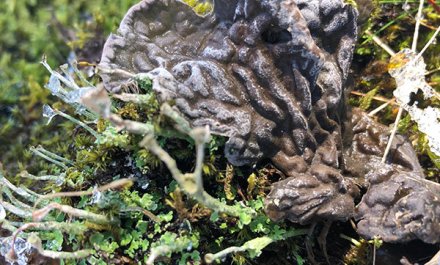- Study
- Student
- Research
- About UNAK
- University
- Schools & faculties
- Governance
- Rector
- Rector’s Office
- University Council
- University Assembly
- University Office
- Laws and regulations
- Organization
- Code of Ethics
- Councils and committees
- Strategies & policies
- On campus
- Human resource
Isolation of Pseudomonas syringae from Lichens

Ph.D. project
About the project
The widespread bacterial species complex, Pseudomonas syringae, has traditionally been associated with plant pathogenicity. Its presence in non-plant environments like clouds, precipitation, and surface waters raises questions about distribution and habitat preferences crucial for understanding its evolution. Our study initially focused on P. syringae in lichens, analyzing sixteen species in Iceland, revealing only the Peltigera genus consistently hosts it. Phylogenetic analysis of P. syringae strains from various sources showed significant population differences by location. Peltigera lichen, moss, and tracheophyte in the same location had more similar P. syringae populations than the same lichen species in different locations. This finding suggests P. syringae exchange among moss, tracheophytes, and Peltigera.
The presence of P. syringae in Iceland raises concerns due to increasing crop cultivation from climate change. We aimed to assess the pathogenicity and fitness of P. syringae strains isolated from Icelandic Peltigera lichen (phylogroups 01 and 02). The findings reveal similar fitness levels to epidemic strains in five out of ten tested plant species. In the remaining five species, there were instances where lichen strains displayed higher growth, while in others, epidemic strains exhibited superior growth. Additionally, both lichen and epidemic strains exhibited similar levels of pathogenicity in three plant species of significance to Icelandic agriculture. These findings shed light on potential risks posed by P. syringae in Icelandic natural habitats, emphasizing its multifactorial pathogenicity.
Metabolomics, focusing on metabolite detection, identification, and quantification, plays a pivotal role in shaping phenotypes. We conducted LC/MS untargeted metabolomics analysis of lichen genera to uncover metabolic differences influencing P. syringae colonization. Peltigera lichens displayed a simpler yet more abundant metabolic profile, lacking compounds like catechins that inhibit P. syringae growth. Additionally, Peltigera contained guaianes, inhibiting P. syringae's competitor, Bacillus subtilis. Exclusive naphthalenes presence in Peltigera aligns with previous research. This study deepens our understanding of P. syringae's habitat preference, distribution, and metabolomic interactions within lichens.
Doctoral Candidate
- Natalia Ramírez, University of Akureyri (Iceland) – PhD candidate
Doctoral committee and Researchers
- Oddur Þór Vilhelmsson, University of Akureyri (Iceland) – Main supervisor
- Margrét Auður Sigurbjörnsdóttir, University of Akureyri (Iceland) – Main supervisor
- Cindy Morris, INRAE (France) - Supervisor
- Odile Berge, INRAE (France) - Supervisor
- Robert Jackson, University of Birmingham (UK) - Supervisor
- Starri Heiðmarsson, Nature Center of the North West (NNV) (Iceland) - Supervisor
Publications
Ramírez, N., Sigurbjörnsdóttir, M. A., Monteil, C., Berge, O., Heiðmarsson, S., Jackson, R. W., ... & Vilhelmsson, O. (2023). Pseudomonas syringae isolated in lichens for the first time: Unveiling Peltigera genus as the exclusive host. Environmental Microbiology.
Morris, C. E., Ramirez, N., Berge, O., Lacroix, C., Monteil, C., Chandeysson, C., ... & Vilhelmsson, O. Þ. (2022). Pseudomonas syringae on plants in Iceland has likely evolved for several million years outside the reach of processes that mix this bacterial complex across Earth’s temperate zones. Pathogens, 11(3), 357.